Overlock threads: types and tips for choosing

The basics of sewing on a sewing machine are taught at school, this process is laborious, but interesting, because many girls, having matured, continue to sew on their own. Any seamstress, professional or self-taught, understands that it is impossible to sew quality products without an overlock. For the process to go smoothly, and the result to satisfy everyone, it is important to be able to choose the right threads for the overlock, and here one cannot do without knowing their main characteristics.
Peculiarities
Sewing on a sewing machine involves not only joining one piece of fabric to another, but also additional measures that help to make the product more beautiful and its operation longer. Not all fabrics have good wear resistance, not all can withstand wear, without processing the edge of the seams.
To protect themselves from fraying the ends of the fabric at the incision site, seamstresses use an overlock.
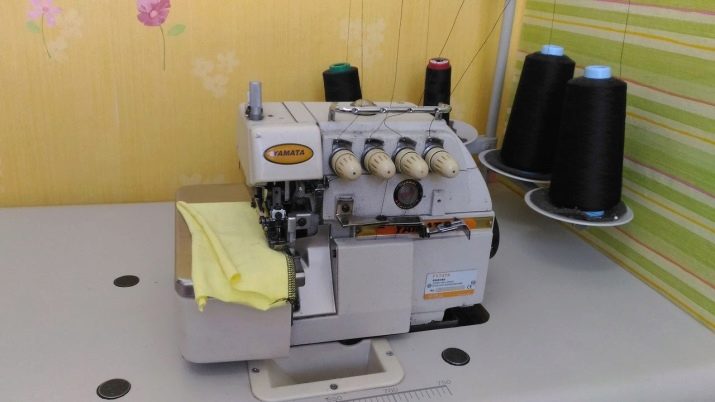
Overlock is called specialized sewing equipment with which you can sew seams. Without the use of such processing, the edges of the fabric will stretch, tangle and begin to move like arrows, violating the integrity and visual beauty of the thing. You cannot do without an overlock when working with cotton, stretch and other materials, the edges of which cannot maintain integrity on their own.

In order to correctly and efficiently process the material with an overlock, you need to set up the device and thread a suitable thread into it... It is the threads that are the most important criterion in working on the overlock, without the desired option it will not be possible to properly sweep the product, and the work will be done in vain.
The main qualities of the threads
Overlock threads must be special, ordinary threads are not suitable in this case. The best option for this equipment is considered to be textured yarns, which can have different thicknesses and colors, selected as needed. Such a thread is used when working with rolled seams, and it is threaded only into loops, for a needle it is recommended to use a regular thread.
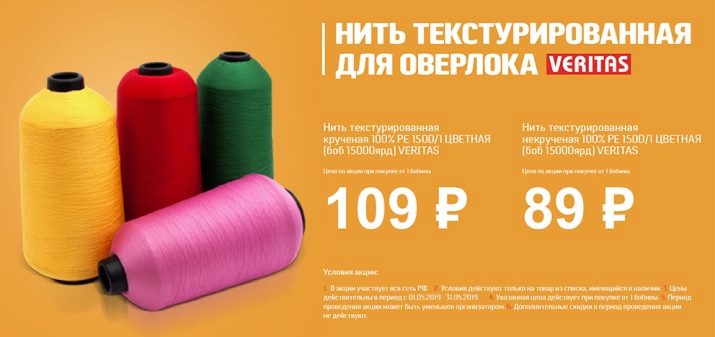
Overlock threads have special characteristics.
- Overlock thread has much stronger elasticity and flexibility than simple thread, which is due to its structure. Specialized overlock threads consist of separate threads that do not twist together, which allows them to be thinner and less noticeable, this plays an important role in the graceful appearance of the finished sewn thing.
- Good indicators of strength and wear resistance, which is especially important when sewing items from elastic materials. Thanks to the flexibility of the overlock thread, it is possible to cope with even the most unpleasant and problematic fabrics.
- Special thread structure allows them to be as smooth as possible, which helps with high-speed sewing.
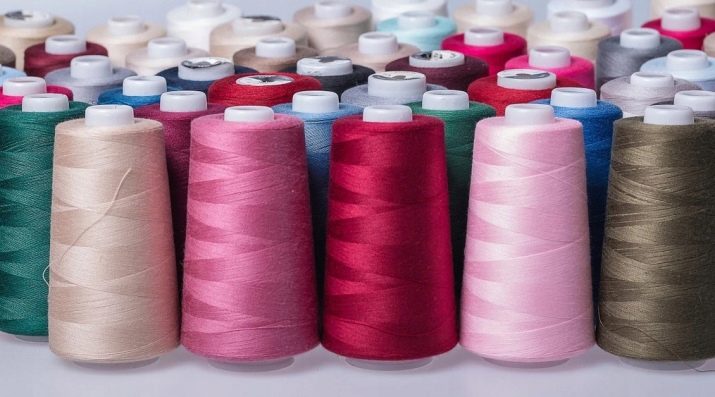
Overlock yarns can be sold in both small spools and large spools. The second option is more profitable, as it significantly saves the budget and the cost of sewing any thing. When sewing a product with an overlock, up to five threads are simultaneously used to protect the seam from any deformations, therefore, the use of ordinary threads in this case is unacceptable, since the seam from them will turn out to be coarse and thick.

How to make the right choice?
The selection of threads for the overlock is based on the thickness and other characteristics of the material itself. Thread size range may vary from 50 to 120, for thin materials it is better to use the thinnest thread, for dense materials - a thicker one, otherwise the integrity of the seam may be violated, since the threads will rub against the dense material and its rough edge.
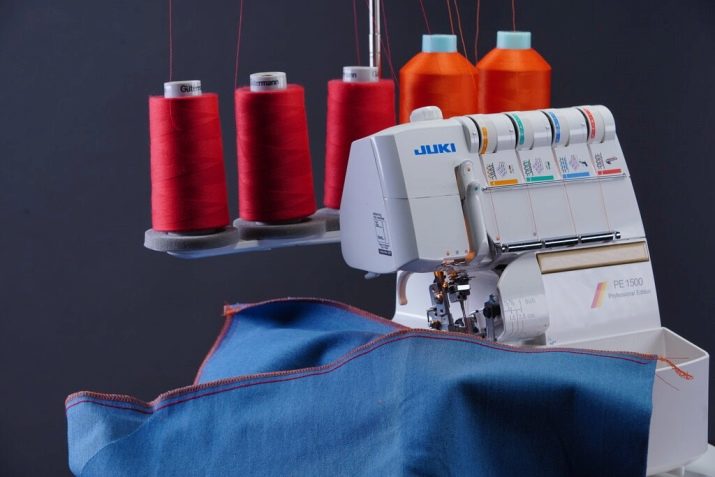
When choosing threads, you need to evaluate them visually, try them for strength and check the manufacturer. If the product makes an unpleasant impression, it breaks when pulled, and when passed with your fingers, it gathers into a lump, then it is better to refuse such a purchase. In order not to purchase a low-quality product, you should pay attention only to proven products of well-known brands, which include:
- Madeira - made of reinforced polyester, best suited for thin fabrics and overcasting;
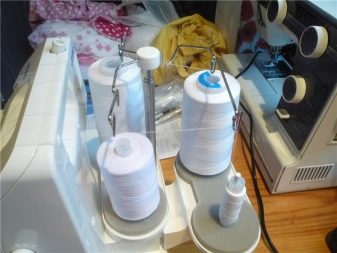
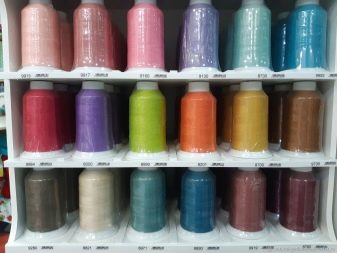
- Gutermann - made of polyester, considered versatile, suitable for any seams and materials;
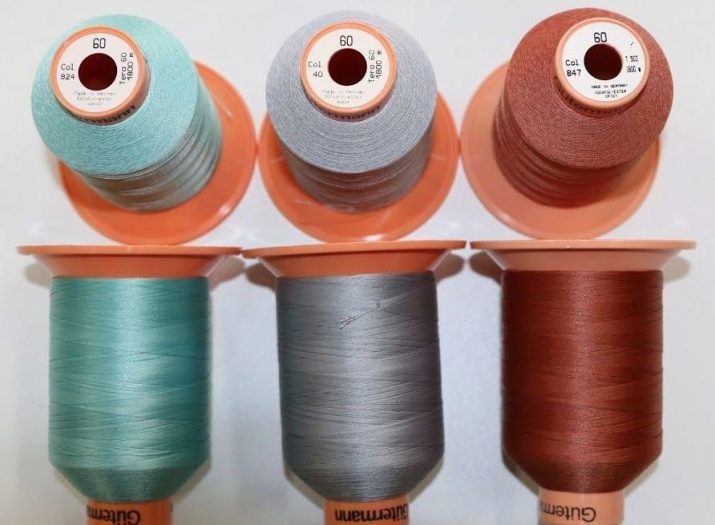
- Amann mettler - offers an assortment of translucent and transparent threads, in addition, there are universal products that are equally well used both in a sewing machine and in an overlock (there are also textured threads in products that are best suited for working with knitwear, due to their soft and delicate structure);
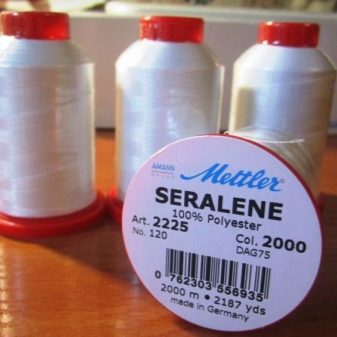
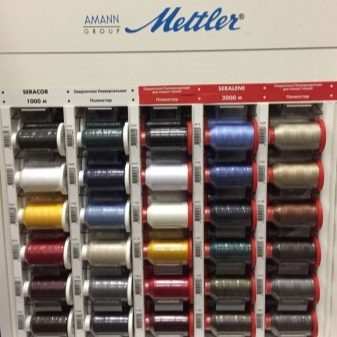
- "Gamma" - for a three-thread overlock, used for fabrics with medium density indicators;
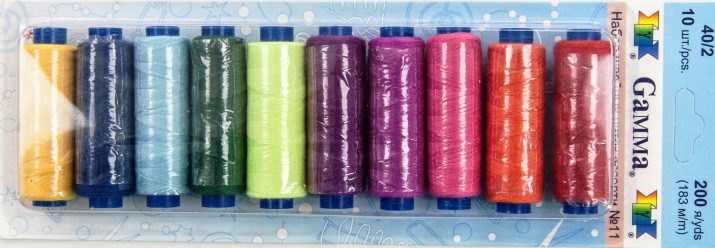
- "Ideal" - used for a three-thread overlock.
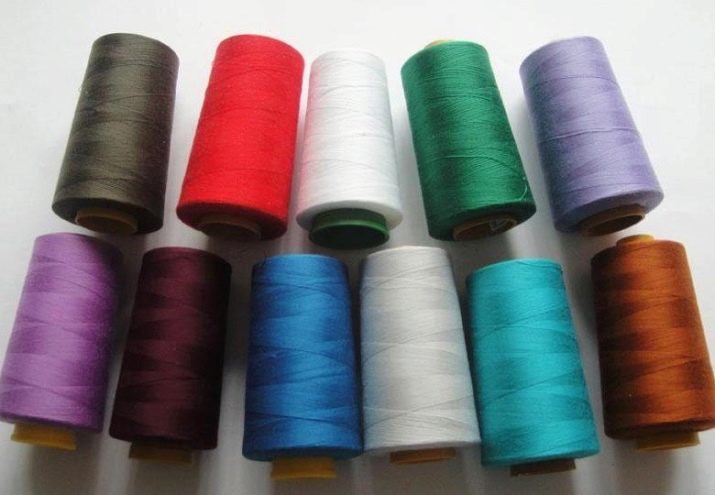
Foreign manufacturers specialize in the production of the highest quality overlock threads, which are used by professional seamstresses. If you need a simpler option, then the products of a domestic manufacturer provide reliable and good yarns, which will cope with the task, but will have a smaller set of positive qualities and their service life may be shorter.
When sewing some material, you need to use threads of the appropriate shades so that the finish is not too noticeable, and the processing of the edges looks as natural as possible. In addition to color preferences, it is important to maintain the uniformity of structure and thickness, otherwise tension problems arise, and the seam comes out uneven and ugly.
To minimize the visibility of the overlock seam, you can use translucent and transparent threads that merge with the material and become invisible.

There are several types of overlock thread.
- For carpet - overlock makes it possible to strengthen the edges of the carpet or carpet, preventing it from shedding and unraveling the edges. In this case, a special buttonhole stitch is used, and unnecessary edges are cut off during processing. Carpet overlocks have good power indicators and the processing speed can reach more than 3 thousand stitches per minute. In this case, polypropylene threads are used, in some cases the use of nylon varieties is allowed.
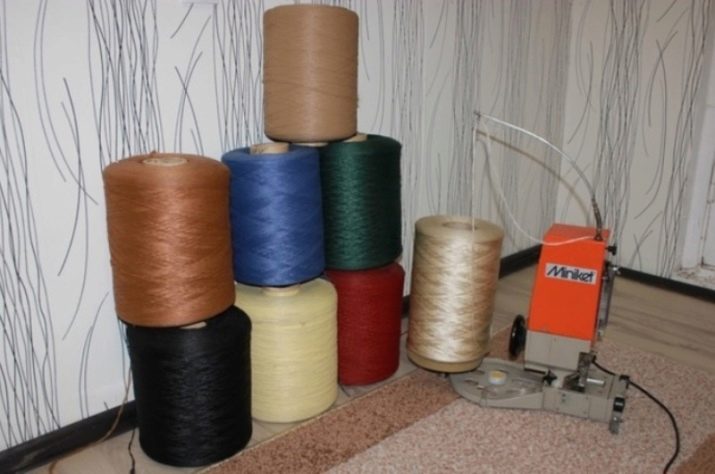
- For overcasting heavy fabrics thicker threads are selected.
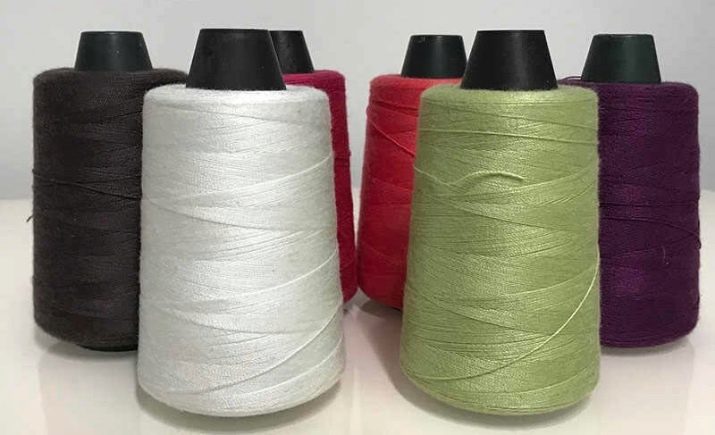
- For working with thin and stretch materials the finest overlock threads are used.
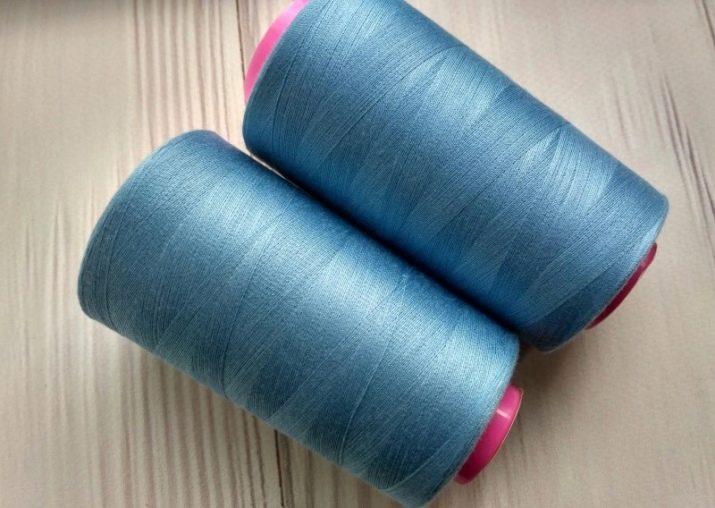
To choose the right thread for an overlock, you need to take into account the following factors:
- the type of material to be processed;
- the version of the needle that will be used in the work;
- the scope of the proposed work;
- the budget for tailoring the product.
After analyzing all the factors and choosing the thread you need in color, structure and thickness, you can successfully overcast the edges and seams, getting the desired result.

What not to use?
In order for the whole process of overcasting to go through without problems, and the product to be of high quality, you need to know what threads cannot be used when working on an overlock:
- ordinary cotton thread, designed for sewing on a sewing machine;
- reinforced samples with markings LL and LH;
- industrial version designed for a single-operation overlock;
- threads that are too flexible.

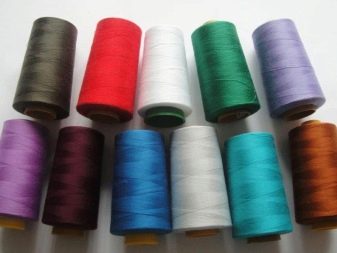
Choosing any of these varieties will result in wear and tear on the overlocker, as well as a short service life for products sewn with the wrong threads.
In order for the overlock seam to be uniform, even and beautiful, it is necessary to use not only threads of the same thickness and composition, it is recommended to select products of the same quality, density and the same manufacturer. To protect yourself from unexpected surprises while working on the overlock, it is important to pay attention not only to the threads, but also to the mechanism itself. With timely maintenance, lubrication and cleaning of equipment, it will work accurately and smoothly.
For information on what thread is better to sew on the overlock, see the next video.








